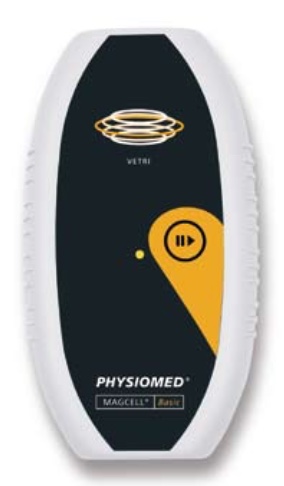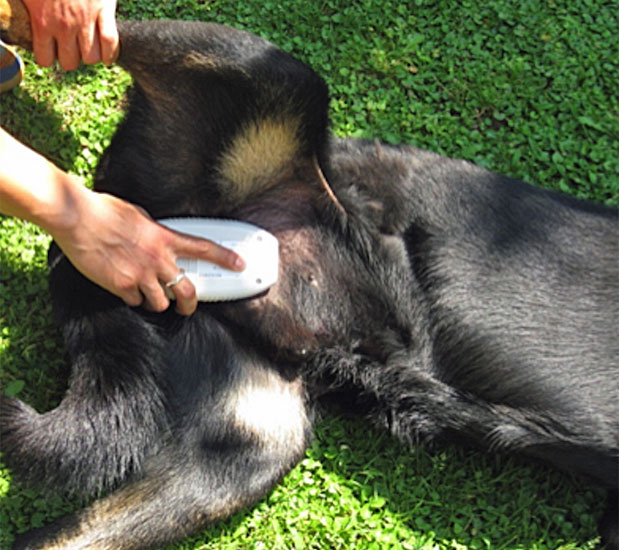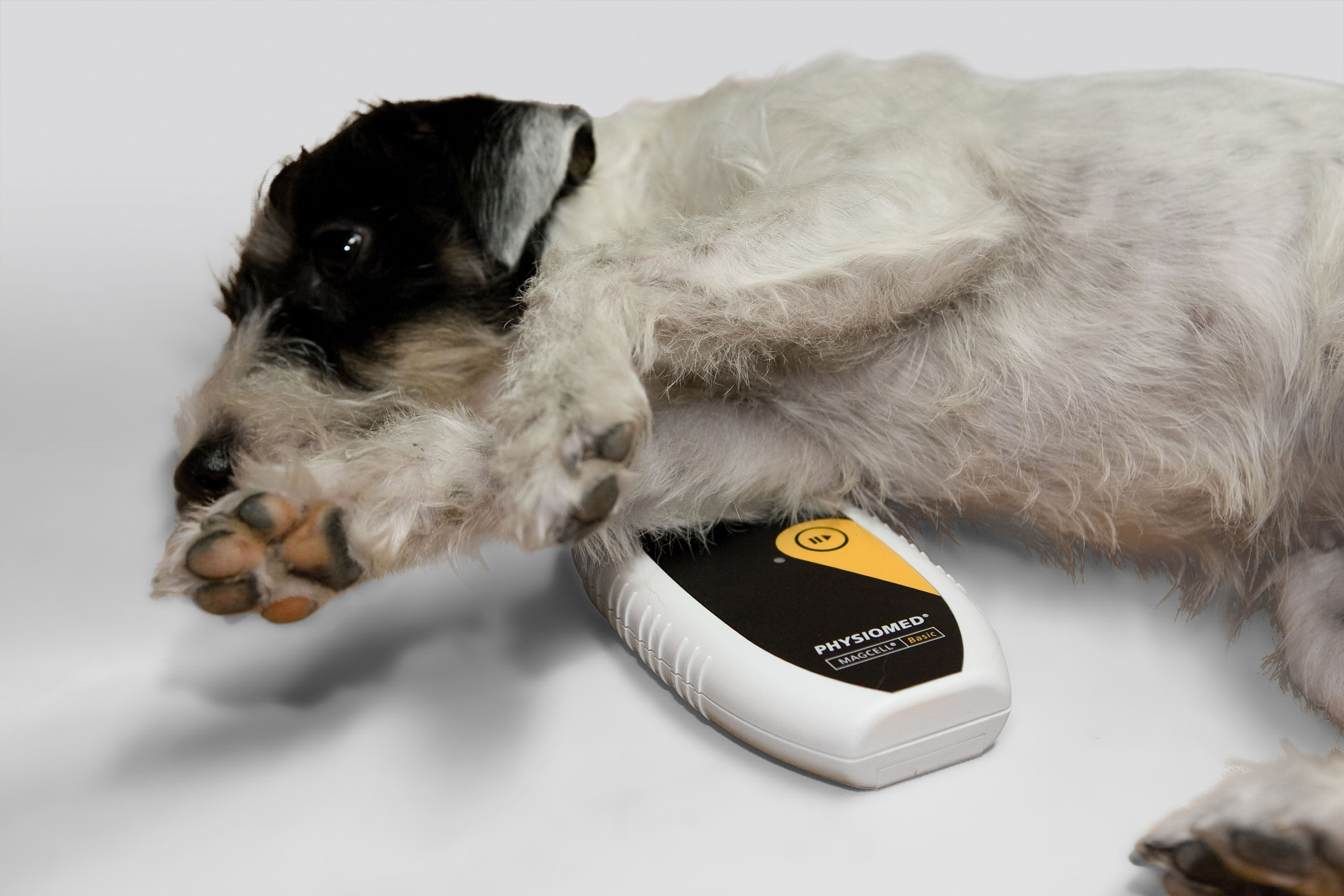Veterinary Electrotherapy Products
PhysioPod UK Ltd are the Exclusive UK & Republic of Ireland distributors for Deep Oscillation Personal Sports used in equine and the MAGCELL® VETRI
Equine/Canine Therapists using DEEP OSCILLATION®
MAGCELL® VETRI



Pulsed electromagnetic fields (PEMF) · Strength of magnetic eld more than 1000 Gauss · Induction of biologically effective electric fields in the tissue (>10 mA/cm2) · Easy operation · No side effects known · Handy size
SPECIAL FEATURES
Magnetic field therapies are available in various forms and forms. Some forms of therapy are not scientifically documented in their efficacy. Furthermore, this procedure is not to be confused with "Pulsating Signal Therapy (PST)", "MultiBioSignal Therapy (MBST)", "Nuclear Resonance Therapy", "TENS" or other transmission forms such as magnetic field mats or magnetic field coils.
Time-changeable magnetic fields can be transmission medium for electric fields. Provided the strength of the field is sufficiently high, electromagnetic fields of action can be induced in the tissue and can thus be transported relatively deeply into deep tissue coatings ("electrodeless electrotherapy").
MAGCELL® VETRI works with therapeutic parameters, which have been determined in empirical and clinical research in the field of bio-electromagnetism. MAGCELL® VETRI can relieve inflammatory pain, increase exercise readiness, and locally increase blood circulation.
MAGCELL® VETRI is small, handy, portable and works anywhere with batteries. It is suitable for use with both horses and small animals. The therapy is started when the start button is activated and runs automatically. An audible signal indicates the end of treatment. The device can optionally be fixed to the body region being treated with a specially designed bag.
GENERAL FEATURES
MAGCELL® VETRI immediately soothes inflammation, improves cellular metabolism, and increases mobility. High-dose pulse magnetic fields are generated using an innovative process. They serve as the transfer media for electrical treatment fields. The fields are physiologically effective in the joint area and threshold values for important cellular regeneration and differentiation processes are exceeded.
TECHNICAL DATA
Classication: internal power supply
Battery: 2x alkaline, 15A Lr6 AA 1.5
Strength of magnetic: max. 200 mT
Dimensions (w x h x d): 83 x 152 x 25 mm
Weight: 0.21 kg
STANDARD ACCESSORIES
[2] Batteries
[1] Metal case
[1] Operating instruction
Study in The Prostate August 2014 - MAGCELL® VETRI
Effect of Pulsed Electromagnetic Field Therapyon Prostate Volume and Vascularity in theTreatment of Benign Prostatic Hyperplasia: A Pilot Study in a Canine Mode Authors: Raffaella Leoci, 1* Giulio Aiudi,1 Fabio Silvestre, 1 Elaine Lissner, 2 and Giovanni Michele Lacalandra 1 - Department of Emergency and Organ Transplantation (DETO), Section of Veterinary Clinic and Animal Production, University of Bari Aldo Moro, Valenzano, Bari,Italy 2, Parsemus Foundation, Berkeley, California
BACKGROUND.
Benign prostatic hyperplasia (BPH) is a result of urogenital aging. Recent studies suggest that an age-related impairment of the blood supply to the lower urinary tract plays a role in the development of BPH and thus may be a contributing factor in the pathogenesis of BPH. The canine prostate is a model for understanding abnormal growth of the human prostate gland. We studied the efficacy of pulsed electromagnetic field therapy (PEMF) in dogs to modify prostate blood flow and evaluated its effect on BPH.
METHODS.
PEMF (5min, twice a day for 3 weeks) was performed on 20 dogs affected by BPH. Prostatic volume, Doppler assessment by ultrasonography, libido, semen quality, testosterone levels, and seminal plasma volume, composition and pH were evaluated before and after treatment.
RESULTS
The 3 weeks of PEMF produced a significant reduction in prostatic volume (average 57%) without any interference with semen quality, testosterone levels or libido. Doppler parameters showed a reduction of peripheral resistances and a progressive reduction throughout the trial of the systolic peak velocity, end-diastolic velocity, mean velocity, mean, and peak gradient of the blood flow in the dorsal branch of the prostatic artery. The pulsatility index and the resistance index did not vary significantly over time.
CONCLUSIONS
The efficacy of PEMF on BPH in dogs, with no side effects, suggests the suitability of this treatment in humans and supports the hypothesis that impairment of blood supply to the lower urinary tract may be a causative factor in the development of BPH.
More information


